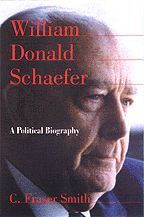
Reviews
While the book elaborates on Maryland's role in the beginning and end of the Jim Crow era, the most compelling aspect of the book is the stories Smith gleaned from dozens of interviews with Marylanders, black and white, who lived with segregation and fought to end its practices.
Hand it to your students... and make sure their parents read it, too. It's a road map of America's long political struggle from slavery to a black man running for president.
It's a darned good book by a darned good writer. Those of you who love fine writing and history can't afford to pass on Here Lies Jim Crow.
In this case, you can judge a book by its cover... it sets the tone for Smith's spirited discussion of Jim Crow laws and the efforts of Marylanders to resist and overturn them.
By its very nature a moving but difficult and painful read. Painful or not, it is a book that helps one see present-day Maryland with a greater depth of understanding, and is certainly worth whatever discomfort it creates.
Tells the story of the long life and hard death of racial segregation in the Free State.
This engaging narrative highlights important episodes in Maryland's history not likely widely known and appreciated and provides insight into key moments and personalities in the history of civil rights in the state.
I just finished your book Here Lies Jim Crow. It should be a high school text book. Congratulations on telling a very important story and doing it so well.
Book Details
Preface
Prologue: Laboring Sons: Jim Crow on a Bulldozer
1. Taney and Douglass
Freddy Bailey in Baltimore: "Almost a Free Citizen"
"Mere Property": Taney and Douglass on the National Stage
A Southern
Preface
Prologue: Laboring Sons: Jim Crow on a Bulldozer
1. Taney and Douglass
Freddy Bailey in Baltimore: "Almost a Free Citizen"
"Mere Property": Taney and Douglass on the National Stage
A Southern Gentleman's Manifesto: Taney's Infamous Decision
Taney's Legacy: Words That Don't Die
2. Suing Jim Crow
"Blood at the Roots": The Mob Helps Raise a Movement
A New Vision: Economic Leverage
Eugene O'Dunne: Court of Justice
Lillie May and Ted: God Opened Their Mouths
3. Different Drummers
Healing Arts: Blue Babies, Black Genius
Ester McCready: A Lover of Solitude
Walkers and Thinkers: Opinion Leaders
Malcontents: Inside Agitators
Final Sale: Hats, Tennis, and White Coffee Pots
George Russell: The Endurance of Jim Crow
4. Roadblocks and Resistance
All Nations Day: The Civil Rights Merry-Go-Round
Gloria Richardson: Flash Point
Goon Squad: The Word on the Street
5. Seats at the Table
Backlash: A Martyed King and the Making of a Vice President
The Ballot: Sit-in Salads and Lawn Signs
Exquisite Balance: Taney and Marshall in Annapolis
Dean Schmoke: Renewing Houston's Challenge
Epilogue
Acknowledgment
Appendix: Author Interviews
Notes
Index





